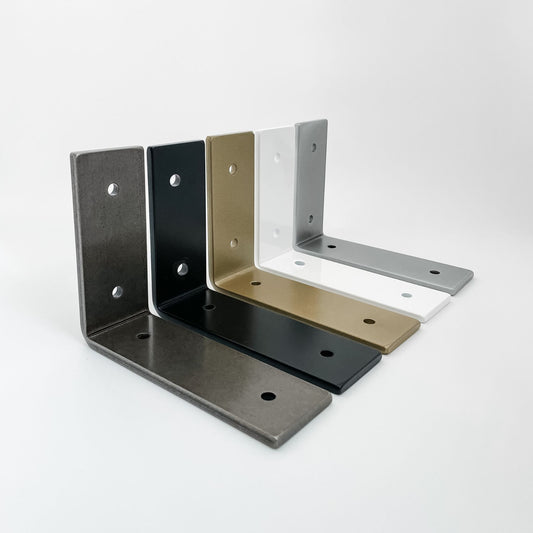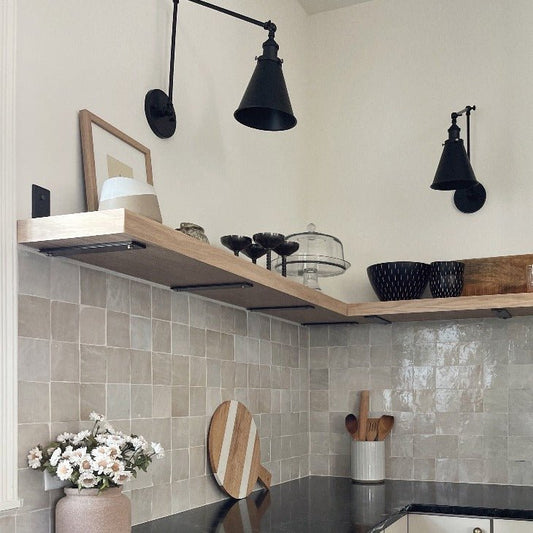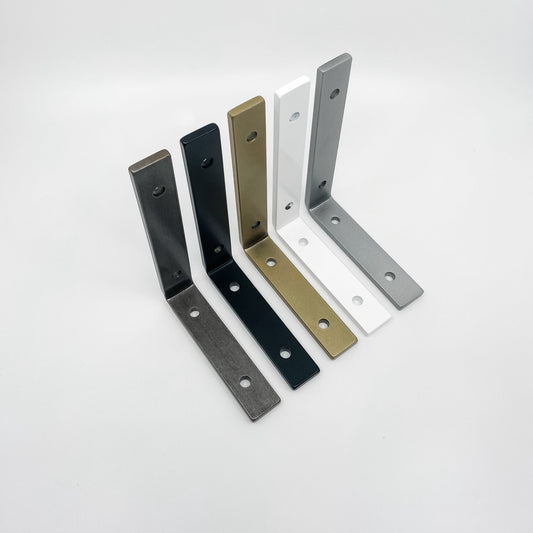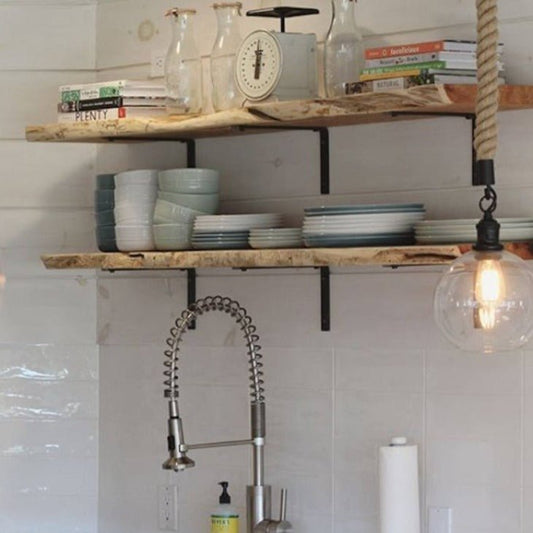Many people come to us with questions about fixing shelves that are sagging under the weight of books, dishes, or other items when using other hardware.
Shelves without sufficient support often start to bow over time, especially under heavy loads. Fortunately, there are some simple steps to reinforce and strengthen shelves.

Identify the Problem
Before you start reinforcing the shelf, it’s important to understand what’s causing it to sag:
- Too much weight: Overloading the shelf with heavy items like books or dishes can cause it to sag.
- Weak or improper supports: If the shelf is not properly supported by brackets or has inadequate support in the middle, it may begin to bow under pressure. This is a common issue for floating shelf brackets.
- Poor-quality materials: Some shelves are made from particle board or other materials that are prone to sagging when they carry too much weight.
Once you’ve identified the issue, you can decide on the best method to reinforce the shelf.
Add More Supports
One of the easiest ways to reinforce a sagging shelf is to add extra support underneath or behind the shelf. Here are a few ways to do this:
- Install additional brackets: If your shelf only has supports at the ends, adding a bracket or two in the middle can help distribute the weight more evenly and prevent sagging.
- Use L brackets: For floating or built-in shelves, installing L brackets underneath the shelf can provide more stability. Attach the L brackets to the wall and the underside of the shelf for maximum support.
- Add a center support: For long shelves, especially those over 3 feet, adding a support beam or rod in the middle of the shelf can help prevent bowing. We have a guide to determine how many brackets are needed based on shelf length.

Replace the Shelf Material
If your shelf is made from a weak material like particle board or MDF and continues to sag even after adding support, it might be time to replace it with a stronger material such as solid wood.
By choosing a more durable material, you can prevent future sagging and ensure that your shelves hold up over time.
Redistribute the Weight
Sometimes, the simplest solution is to lighten the load on your shelf:
- Remove some of the heavier items from the shelf and redistribute them to other storage areas.
- Place the heaviest items near the ends where the brackets or supports are stronger, leaving lighter items in the middle.
This not only prevents sagging but also extends the life of your shelves.
The Bottom Line: Reinforcing Shelves for Long-Lasting Strength
A sagging shelf doesn’t mean you need to replace it entirely. With a few simple reinforcements you can give your shelf the support it needs. Adding more brackets, replacing shelf material, and redistributing the weight are all ways to help a sagging shelf.
By using these methods, you’ll prevent weak spots and make sure your shelves stay sturdy and functional for years to come.







